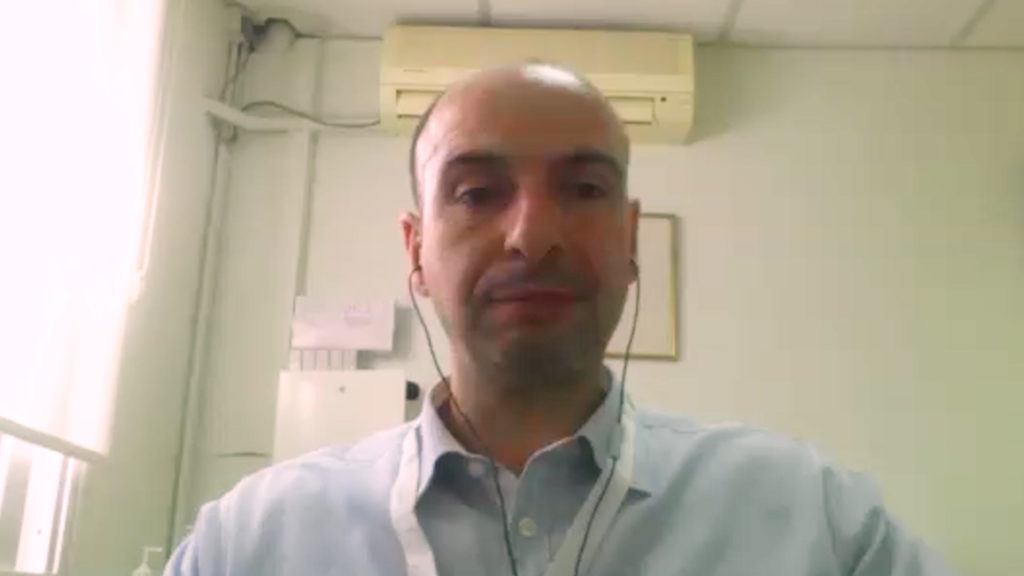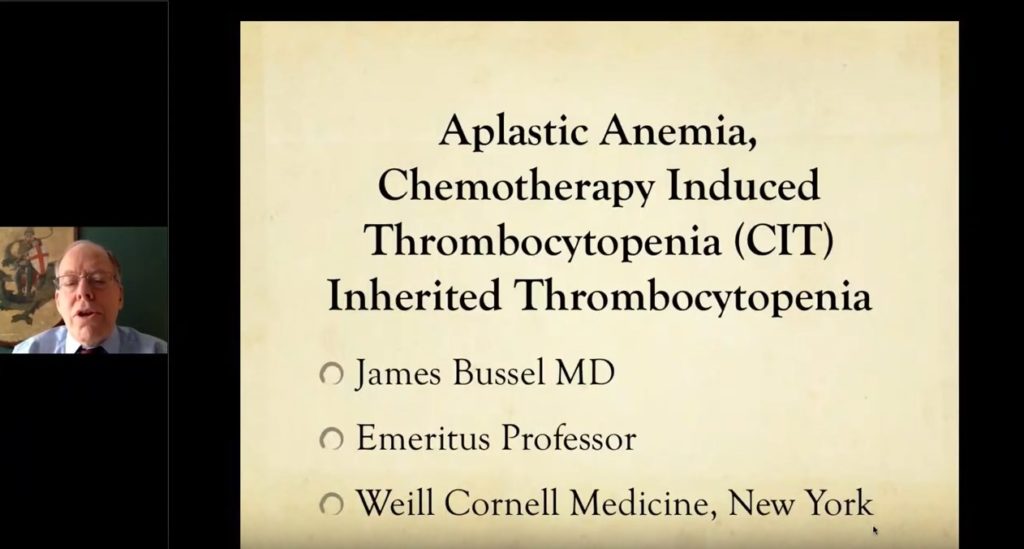At this year’s European Society for Blood and Marrow Transplantation (EBMT) meeting in Glasgow, Scotland, graft-versus-host disease (GVHD) emerged as a central topic of discussion. The conference featured a wealth of innovative research, with numerous abstracts presenting advances in the management of chronic and refractory GVHD, offering new hope for patients facing this challenging complication. Here we explore some of the most exciting abstracts presented.
Promising results from pooled fecal microbiotherapy for refractory GI graft-versus-host disease
A recent study presented at a European conference has revealed encouraging results from an Early Access Program (EAP) using pooled fecal allogeneic microbiotherapy, MaaT013, to treat steroid-refractory (SR) or steroid-dependent (SD) gastrointestinal acute graft-versus-host disease (GI-aGVHD). The program involved 140 patients, including two paediatric cases, who had previously failed multiple systemic treatments.
MaaT013 therapy, administered via enema, showed a significant overall response rate (ORR) of 52% at day 28, with 28% of patients achieving complete response (CR). Notably, the overall survival (OS) rates at six, twelve, and eighteen months were markedly higher in responders compared to non-responders.
The treatment displayed a favorable safety profile, with 35 reported pharmacovigilance cases, including some instances of sepsis and bacteremia, but no direct pathogen transmission linked to the therapy. The study underscores the potential of MaaT013 as a viable treatment for patients with limited options, with ongoing Phase 3 trials aiming to confirm these findings in ruxolitinib-refractory patients.
These findings provide hope for patients with SR/SD GI-aGVHD, a condition notoriously difficult to treat, highlighting MaaT013’s potential to improve clinical outcomes and survival rates.
Three-year follow-up confirms efficacy and safety of belumosudil in chronic GVHD
A three-year follow-up of the ROCKstar study (NCT03640481) confirmed the long-term efficacy and safety of belumosudil, a selective ROCK2 inhibitor, in treating chronic graft-versus-host disease (cGVHD) after allogeneic hematopoietic cell transplant. The study involved 152 participants with severe cGVHD, many of whom had undergone multiple prior therapies.
Participants treated with belumosudil at doses of 200 mg once daily (QD) or twice daily (BID) showed sustained overall response rates (ORRs) of 74% and 76%, respectively. The two-year and three-year failure-free survival rates were 48.0% and 44.1% in the overall population, and 57.0% and 51.8% among responders.
Importantly, the drug maintained a stable safety profile, with no new treatment-related adverse events reported over the three-year period. Discontinuation rates due to disease progression or adverse events decreased each year, further underscoring its tolerability.
These findings support belumosudil’s role as a valuable long-term treatment option for patients with chronic GVHD, offering sustained disease control and safety in a challenging patient population.
New monoclonal antibody shows promise in treating fibrosis-dominant chronic GVHD
Results from a phase 2 study reveals that axatilimab, an investigational anti-CSF-1R monoclonal antibody, may offer significant benefits for patients with fibrosis-dominant chronic GVHD following allogeneic stem cell transplantation.
The AGAVE-201 trial (NCT04710576) evaluated 241 patients with fibrosis-related chronic GVHD, affecting organs such as the skin, lungs, joints and esophagus. The study found that axatilimab led to improvements across all affected organs, with the highest response rates observed in the 0.3 mg/kg every two weeks cohort. Notably, 46% of patients experienced reduced sclerotic skin involvement, and 72% reported symptom relief.
Safety data showed that axatilimab was generally well-tolerated, with mostly low-grade, reversible side effects. Importantly, the study noted a low incidence of opportunistic infections, a common risk in chronic GVHD treatment, with no cases of fatal COVID-19 among participants.
These findings suggest that axatilimab could be a promising new option for managing cGVHD, particularly for patients with fibrosis-dominant disease.
Study shows ruxolitinib as effective as photopheresis in treating severe steroid-refractory GvHD
A recent study by the Italian Group for Bone Marrow Transplantation (GITMO) has revealed that ruxolitinib, whether used alone or in combination with extracorporeal photopheresis (ECP), is as effective as ECP monotherapy in treating steroid-refractory acute graft-versus-host disease (SRaGVHD) in patients following allogeneic stem cell transplants. Despite being administered to patients with more severe, multi-organ involvement, ruxolitinib achieved comparable response rates at day 28—79% for ECP monotherapy, 66% for the combination, and 80% for ruxolitinib alone.
The study, which included 233 patients treated across 18 centres, also found that ECP was more commonly used in cases with skin-only involvement. However, ruxolitinib, even in complex cases, demonstrated a similar efficacy profile, though it was associated with a higher risk of certain infections. These findings underscore the potential of ruxolitinib to effectively manage challenging SRaGVHD cases.
REACH3 study shows ruxolitinib reduces steroid use in chronic GVHD
Post-hoc analysis of the REACH3 study found that ruxolitinib significantly reduces corticosteroid use in patients with chronic GVHD. This analysis, focused on patients categorized as either steroid-dependent (STD) or steroid-progressive (STP) based on their corticosteroid dosage at enrollment, shows promising results.
The study included 311 patients, with 159 receiving RUX and 152 receiving the best available therapy (BAT). Findings indicated that patients treated with ruxolitinib had lower cumulative mean steroid doses by Day 180 compared to those on BAT. Specifically, STD patients on ruxolitinib had a cumulative steroid dose of 41.4 mg/kg, lower than the 48.2 mg/kg observed in the BAT group. Similarly, STP patients on ruxolitinib showed a significant reduction in steroid use (72.0 mg/kg) compared to BAT-treated patients (95.0 mg/kg).
The data suggests that ruxolitinib not only helps manage chronic GVHD but also reduces long-term steroid exposure, which is crucial for minimizing the side effects associated with prolonged steroid use. These findings support ruxolitinib’s potential as a more effective treatment option for chronic GVHD, offering improved outcomes with reduced steroid dependency.
Disclosures: This article was created by the touchONCOLOGY team utilizing AI as an editorial tool (ChatGPT (GPT-4o) [Large language model]. https://chat.openai.com/chat.) The content was developed and edited by human editors. No funding was received in the publication of this article.















